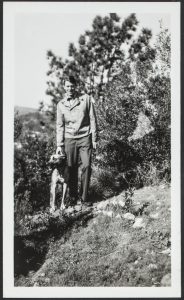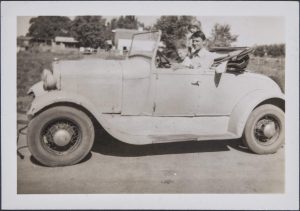Richard Diebenkorn Foundation debuts new educational video

#diebenkorn #diebenkornbeginnings
October 19, 2021
Berkeley, CA
The Richard Diebenkorn Foundation is delighted to introduce a new and scholastic video that explores the early work of Richard Diebenkorn. A preservation of the artist’s beginnings in video format and the first in a new IGTV series, the short documentary premiered today on @diebenkornfoundation’s IGTV channel. The video was produced on the occasion of Richard Diebenkorn: Paintings and Works on Paper 1946-1952, a historical exhibition at Van Doren Waxter in New York devoted to the artist’s stylistic and technical origins in oil, watercolor, gouache, ink, crayon, and collage and shot on location twice during the early months of the pandemic when the exhibition was closed to the public.
The early work had never been shown in the northeastern United States and followed the traveling museum show Richard Diebenkorn: Beginnings, 1942–1955 (2017-2019), organized by the Richard Diebenkorn Foundation in conjunction with the Crocker Art Museum.
In the opening sequence, viewers are introduced to Daisy Murray Holman, Head of Archives at the Richard Diebenkorn Foundation and Rachel Federman, Associate Curator of Modern and Contemporary Drawings, The Morgan Library & Museum. Together, they ground the viewer in the artist’s early body of work, or as Federman says, “Diebenkorn before Diebenkorn.”
Holman, who authored the chronology in the artist’s catalogue raisonné of unique works (Yale University Press, 2016) and an authority on the artist’s life, transports the viewer to 1945 when a young Richard Diebenkorn returned from military service to start art school at the San Francisco Art Institute, then the California School of Fine Arts. She adds that titans of Abstract Expressionism from Clyfford Still to Ad Reinhardt taught and visited the school, and “Diebenkorn was taken under the wing” of artists David Park, Hassel Smith, and Elmer Bischoff.
Federman, who has written about the artist’s 1950s and 1960s representational drawings, remarks that early in the artist’s practice one sees a very personal working through and a “grappling with this kind of tension between the representational and the nonrepresentational.”

As the video progresses, the camera references paintings made in the late 1940s with their dark, angular forms, invoking Surrealism and the fractured planes of Cubism. As an example, this untitled 1948 oil (pictured), as well as experiments with inexpensive materials such as a 1946 assemblage of watercolor, crayon, and collage pasted paper, construction paper, and pasted cardboard of overlapping forms. Federman asks, “What is his voice going to be, how is going to take all of these influences and create something new?”
Holman continues, exploring the artist’s decision in 1950 to move with his family to New Mexico in order to attend the master’s degree program at the University of New Mexico in Albuquerque. “As soon as he gets there,” says Holman, “we begin to see the landscape enter his work again. All of a sudden, there’s the feeling of the world around him.”

Federman adds that “he always said he didn’t think he could work away from the ocean, but that in Albuquerque, the sky replaced the ocean.”
In a visually thrilling and revelatory moment, Holman then relates a significantly scaled 1952 horizontal work in the 2020 exhibition—measuring nearly four feet across consisting of reds and blacks and repeating edge to edge forms and recalling the mesas of the Southwest—to the artist’s first commercial airplane flight, in 1951, from Albuquerque to San Francisco. She asserts that he was very impressed with the geometry of the farmer’s cultivation “with the organic, natural topography” which “opened up a huge new realm for him.”
In the closing sequence, Federman comments that the early work invites another look at the artist.
“That’s one of the things that really sets Diebenkorn apart,” she adds, “is that he wasn’t sort of an abstract artist or a representational artist, but he was an artist who was able to find a kind of reconciliation of those two things in this really beautiful and unique way.”
Enjoy the video by Bower Blue with videography of Holman by Matthew Pendergast.